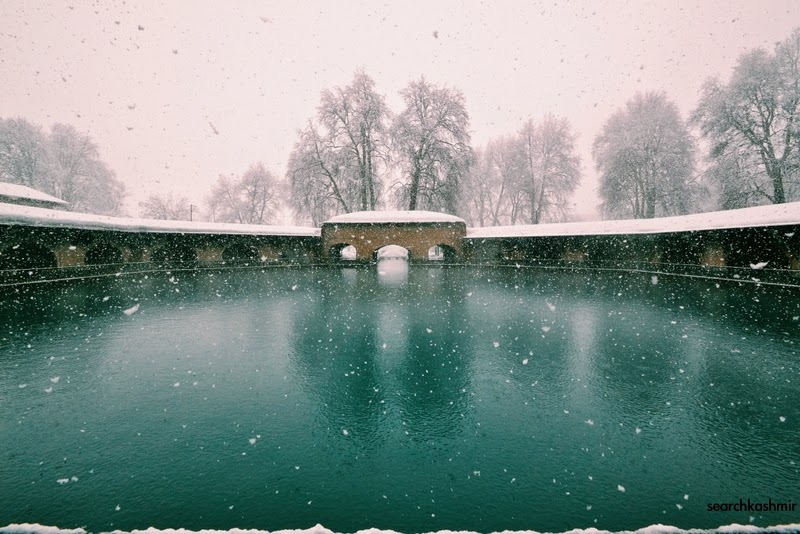A drawing from 1860s by Austrian artist Moritz von Schwind (1804-1871). Found it in ‘Schwind des Meisters Werke’ (1906) by Otto Albert Weigmann. The drawing is based on the story of “The Magic Horse” that appears in The Arabian Nights/Thousand and one nights. The scene depicts a Prince of Persia rescuing a Princess of Bengal from a King of Kashmir.
The are a couple of variations of the story (as it reached west) but mostly goes something like this: An Indian arrives in Shiraz with a magical mechanical flying horse. The price of Shiraz takes it for a test ride without knowing the landing instruction. He somehow lands in Bengal and brings back a princess with her. The Indian steals the princess and flies away to Kashmir. The king of Kashmir rescues the princess from the Indian by killing him but wants to marry the princess much against her wish. Princess loves prince of Shiraz. Meanwhile, the prince of Shiraz arrives in Kashmir with a plan to take back the princess. His plan works and he flies away on magic horse with the princess.
What is interesting about Schwind’s this particular painting is that in an earlier version of it the reaction of King of Kashmir was muted, he was an amazed spectator. But in the later painting, the one we see here, the Kings and his courtiers are gesticulating in helpless anger. Schwind took the text, in which no mention is made of reaction of King of Kashmir and added a layer of emotion over it.
-0-
‘Aakho Sherer-e-Sheerazo‘ (You have come from city of Shiraz) remains a popular Kashmiri song at weddings. It’s about women singing about an ideal bridegroom who arrives from Shiraz. Probably not related to the tale but an interesting fact.
-0-
Hemjuneh, Princess of Kashmir, be-spelled and held prisoner behind a trap door.
From ‘Tales of the Persian Genii’ (1917) by Francis Jenkins Olcott. Illustration by Hungarian illustrator Willy Pogany(1882 – 1955).
The story is told by Mahoud, a jeweller of Delhi, who tries to free her from a merchant of Fez who serves an an evil Enchantress, but is turned into a red toad. Her story is something like this:
A King of Kashmir wants to marry her daughter to the prince of Georgia but the girl does not want to get married at all. Then one day an enchantress in the form of an old woman hands her a handkerchief having a sketch of a handsome man. Enchanted, the princess resolves to marry that man. She seeks that old woman’s help and is flown away to Fez only to realized that the Enchantress has brought her there on request of a local merchant who had heard her beauty. She is now stuck in a foreign land with a bunch of evil types. Luckily for her a good genie, a servant of Soloman, arrives who tries to help her. This genie first admonishes the princess for leaving home of her parents on her own will driven by words of some stranger. He then puts a spell on her to protect her. The spell works in a strange way. If the merchant of Fez looks at the princess, she shall fall asleep till the next full moon. She shall sleep behind a trapdoor that the merchant can only find on the night of full moon and can only be opened by a friend of his. It is in this scenario that the jeweller of Delhi opened the trapdoor for the merchant of Fez but then tried to help the princess.
-0-
 |
| Kids chanting “Samamber has a lover in Iran” in front of would-be husband of Samamber, daughter of Qazi of Kashmir. Haider Beg of Persia, a silent admirer of Samamber pays them to do it. |
Illustration by Hilda Roberts for “Persian tales written down for the first time in the original Kermani and Bakhtiari, and tr. by D. L. R. Lorimer and E. O. Lorimer. (1919). The story is a Bakhtiari tale presented in the book. In this a story a woman from Kashmir goes to a place in Persia to collect herbs once every year. A man sees her and falls in love with her. The woman does’t like it, challenges him, almost kills the guy and goes back to Kashmir where her father arranges her marriage. The man from Persia arrives in Kashmir and tries to win her even as she is about to be married. After some twists, the woman falls for the Persian man and goes away with him, gets married. Later still in the story, the man asks his wife to leave him and marry his best friend as his best friend has fallen in love with her (a scenario on Hindi cinema was to make countless flicks). She agrees. But at last moment truth is revealed, she is re-married to her original husband and everything turns out fine.
-0-
Princess Farruchnas daughter of Togrul bey, who ruled over Kashmir. Doesn;t want to get married but later falls for Persian prince Farruchshad. From ‘Gulistan: Tales of Ancient Persia’ (1977) by Gotlinde Thylmann Von Keyserlingk, Karl Thylmann. The story is identified by Richard Burton as “Farrukh-Shad, Farrukh-Ruz, and Farrukh-Naz”.
-0-
















































